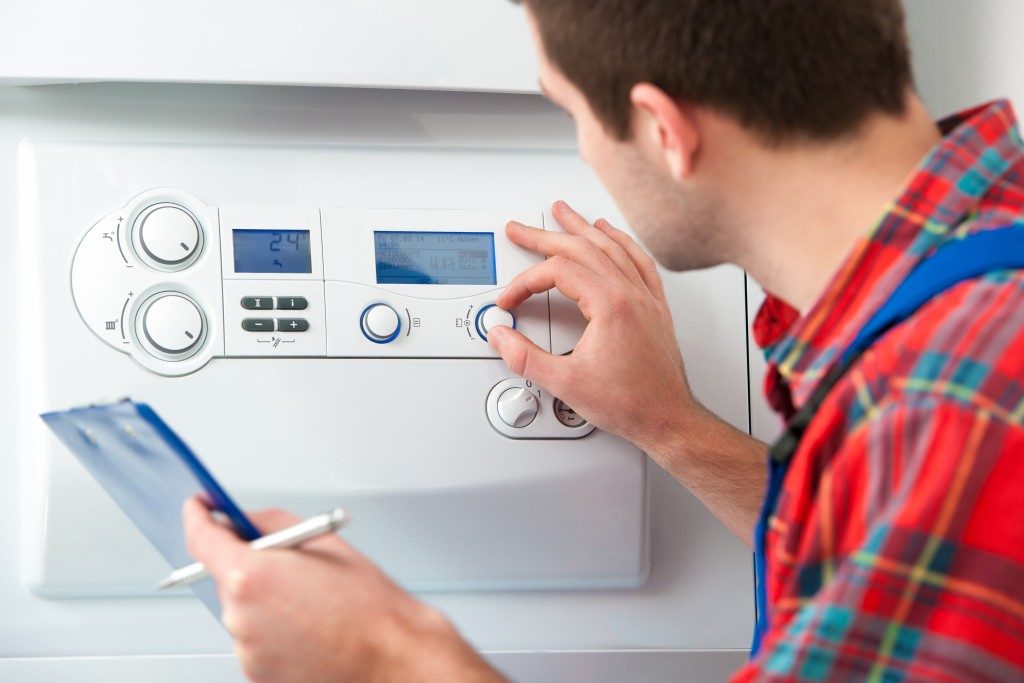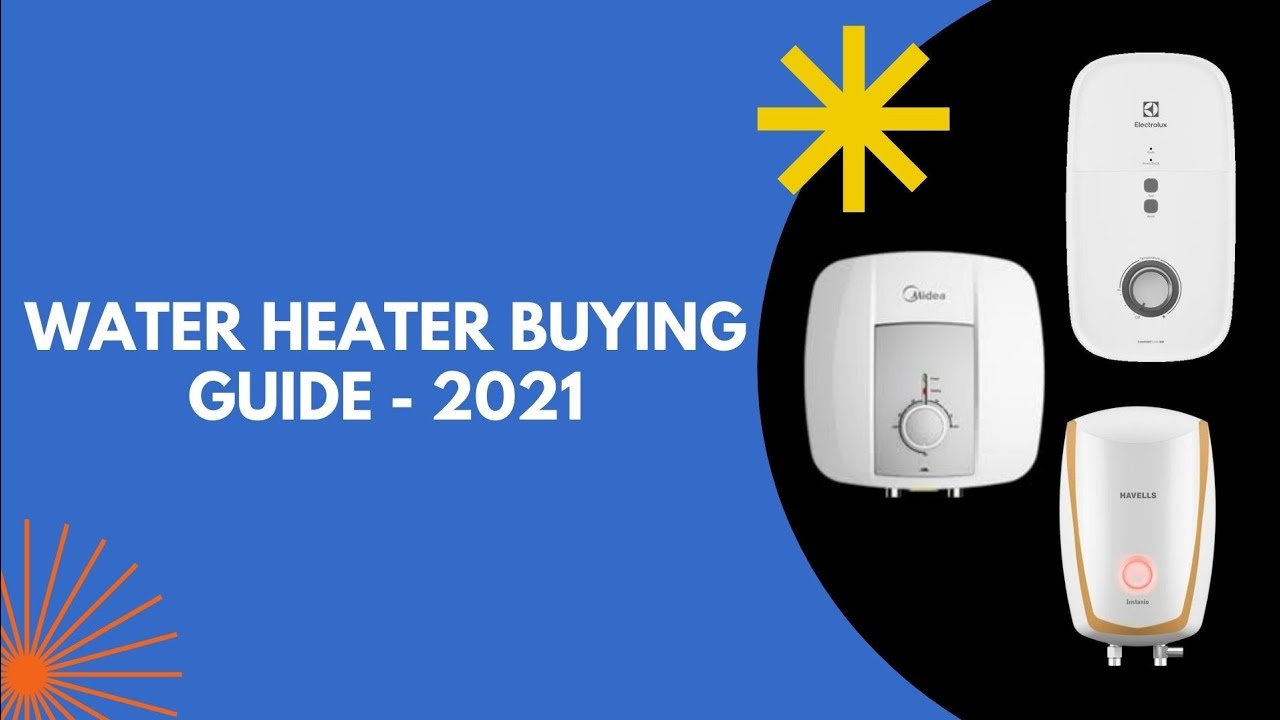The cost of heating water consumes almost 20 percent of your household budget, second only to what you spend on heating and cooling your home. And if you’ve been spending more time at home because of the pandemic, it’s likely that your usage and costs have gone up. Despite this expense, water heaters are typically ignored until they break, leaving you with no hot water and, possibly, a flooded basement.Here, we’ll discuss water heater brands as well as some factors to consider when purchasing a water heater.
If your water heater is nearing the end of its useful life and you’re thinking of replacing it before disaster strikes, you’ll be happy to know that you have better choices, thanks to federal regulations that require water heaters to be more energy-efficient. New storage tank water heaters are required to operate more efficiently, and tank-less (on-demand) water heaters are even more efficient than that.
Typically, homeowners replace their old water heater with one of the same type that runs on the same fuel—natural gas or electricity. Switching from a tank water heater to a tank less unit can be expensive because it requires you to retrofit your plumbing and possibly your electrical system. But if you’re building a new home or adding to an existing one, installing a tank less water heater may make economic sense.
For more, you can check water heater brands to avoid.Go website!
How We Test Water Heaters
Consumer Reports recently tested several electric and gas whole-house tank-less water heaters from brands such as Bosch, Navien, Noritz, Rheem, Rinnai, Tempra, and Trutankless. We compared the results with those of conventional tanked heaters from Rheem, one gas and one electric, as well as with a Rheem electric heat pump water heater, which is a variation on a tanked water heater.
Following a “heavy use” industry-standard test, we compared the performance of gas and electric tank-less water heaters with the performance of their conventional tank counterparts. The test used a high draw pattern equal to using 84 gallons of water per day. That’s the daily equivalent of taking several showers, running the dishwasher, washing one load of laundry, and turning the faucet on and off multiple times. The test used an inlet temperature of 58° F for gas models and 74° F for electrics (plus or minus 2° F) and a target outlet temperature of 120° F.
Because the tank-less water heaters performed so similarly to each other, we averaged the results of each batch, gas, and electric, and compared that score with the performance of the conventional gas and electric storage tanks and the electric heat pump model. As a result, we have no model-level ratings as we do with other major appliances.
Using the purchase price, annual energy cost, and an estimated cost of installation, we calculated the payback time for both new and replacement installations. Payback time was longer for a tank-less unit that replaced an existing storage tank but more reasonable with new construction.
Consider Capacity
Tank water heaters typically hold 40, 50, or 55 gallons or more. The size you buy depends on the number of people living in your home and your peak water usage. A family of four, for instance, might take several showers, run the dishwasher, and wash a load or two of laundry in an average day, totaling 100 gallons of hot water or more. But that doesn’t mean that a household needs a 100-gallon storage tank.
For storage tank water heaters, it’s important to consider the first-hour rating, which is the number of gallons a water heater can deliver in an hour starting with a full tank. You’ll find the FHR on the EnergyGuide label. To calculate what FHR will work for your home, use the calculator on the Energy Saver website.
As the result of recently updated efficiency standards, water heaters less than 55 gallons now have a 4 percent boost in efficiency, and water heaters 55 gallons or more have efficiency gains of 25 to 50 percent, depending on the technology used—heat pump or condensing. (See water heater types, below.)
And don’t assume that a new water heater will fit where your old one was. Because of increased insulation and other efficiency improvements, some newer models may be wider and/or taller than your old water heater.
Tank-less water heaters, of course, don’t hold much water, so the number to look for is the gallons-per-minute rating (GPM). That’s the number that tells you how much hot water the heater can deliver over a set period of time. The higher the GPM, the more hot water the unit can deliver. If you have a big family and multiple bathrooms, you’ll need a tank-less water heater with a higher GPM. A typical shower, for example, uses up to 2.5 GPM. Newer washers use from 7 gallons (front-loader) to 19 gallons (agitator top-loader) per wash, but older models can use up to 32 gallons per load, as indicated below. Calculate your needs accordingly.
Water Heater Types
There are several options depending on how much hot water you use and how you heat the water (gas or electric). Some types are said to cut energy costs in half compared to traditional storage models. However, because of the additional up-front costs, the payback period may be longer.
-
Storage tank water heater
-
tank less water heaters
-
heat pump water heater
-
Solar water heater
-
Condensing Water Heater

Consider the following features:
Water heaters are typically covered for three to twelve years under warranty. Longer-warranty models cost a little more, but we’ve found that they have larger elements or burners that can speed up water heating and thicker insulation that prevents heat loss. Choose a water heater that comes with the most comprehensive warranty.
Anti-scale features: Some brands claim that by swirling the water, they can reduce the buildup of mineral scale at the bottom of the tank. Although scale can shorten the life of the heating element, you don’t need to spend a lot of money to get a long-lasting water heater. Simply look for one that comes with a 12-year warranty and a longer or thicker element.
Drain valves (brass vs. plastic) are located near the base of the water heater and allow a garden hose to drain the heater. Drain valves made of brass are more durable than those made of plastic.
Digital displays: These aid in the monitoring of levels and the customization of operations. You can set a vacation mode on some electric/heat-pump hybrid water heaters to use only the heat pump for added efficiency while you’re away. Solar water heater displays frequently show tank and collector temperatures, as well as pressure readings and other data.
All you need to know about today’s trends in social media marketing,Here!


